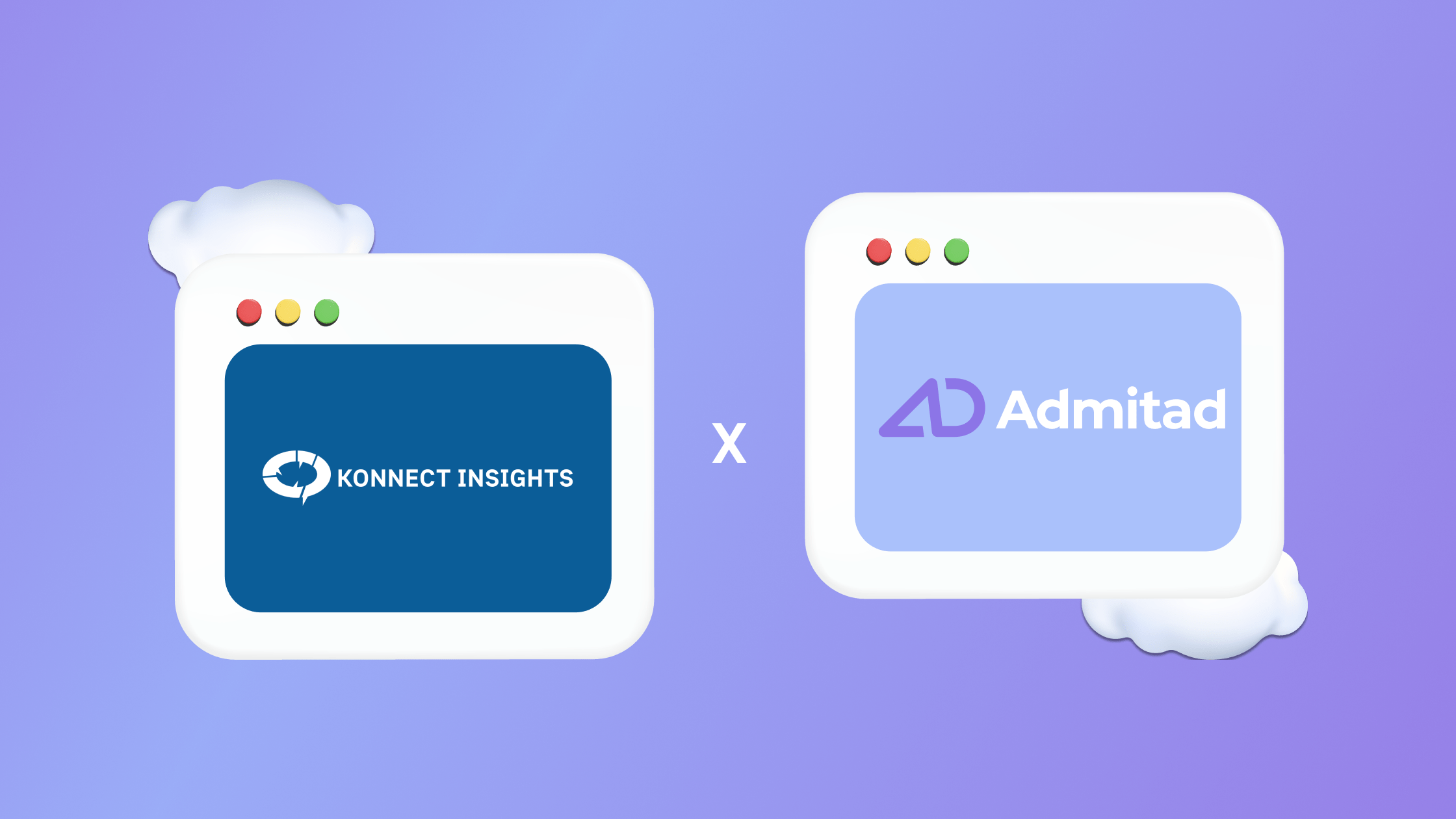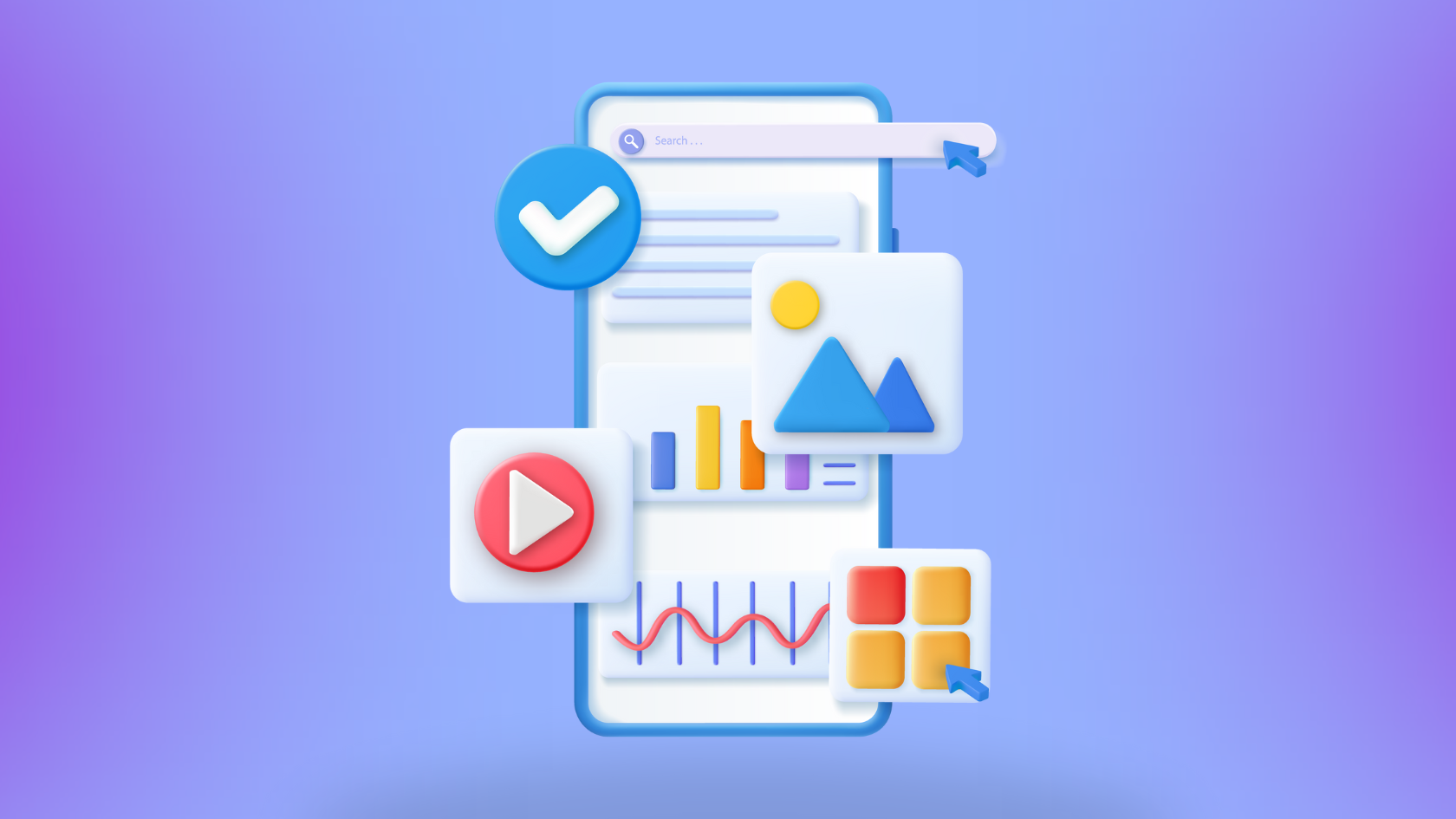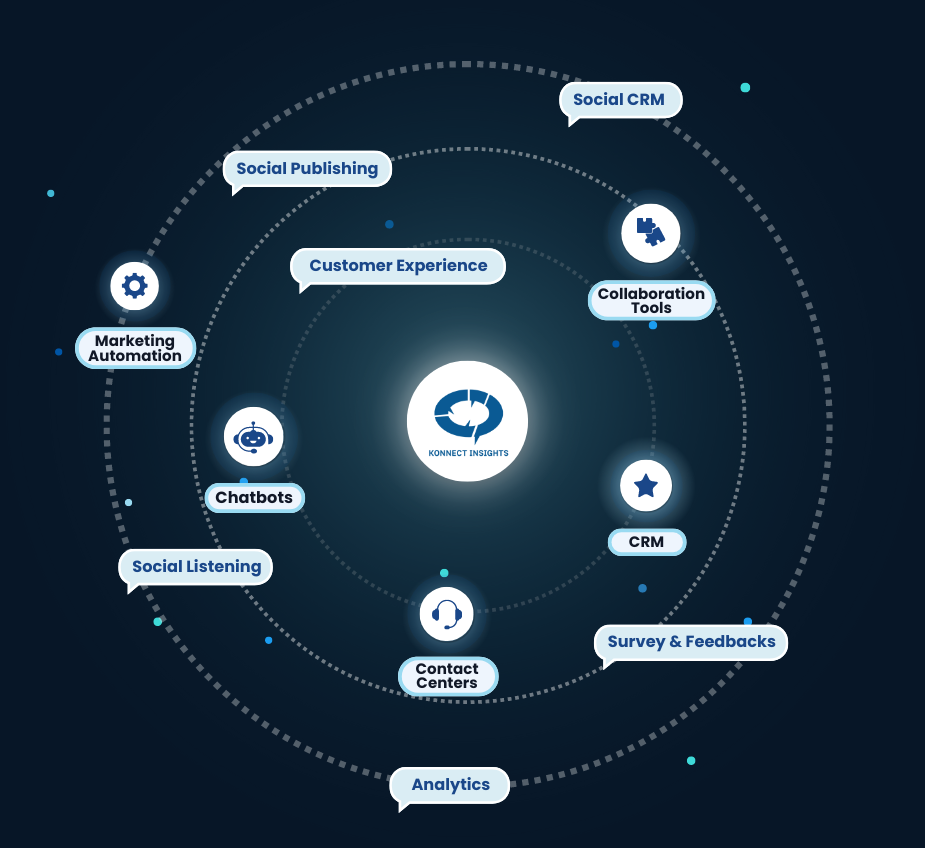Introduction
Social listening has become indispensable for brands today. Consumers frequently take to social media to discuss, complain about, and engage with brands. Having the capability to tune into these conversations happening online provides invaluable consumer and competitive intelligence. However, the social listening technology landscape has many software vendors.
This makes it challenging to determine which platform truly fits your needs without getting locked into limited capabilities or poor scalability. The wrong choice usually means missing crucial data, disjointed workflows between teams, and no unified customer view.
This article provides an in-depth checklist of must-have features and capabilities to evaluate when selecting a social listening platform. Following this guide will help you assess tools effectively, validate vendor claims, and choose a solution that enables impactful listening, drives business growth, and offers future-proof scalability.
Robust Data Capture Across All Relevant Channels and Sources

The foundation of any social listening platform is its ability to capture relevant social data across the channels and sources your audience uses. This includes public platforms like Twitter, Facebook, Instagram, YouTube, etc. as well as private brand-owned channels like messaging apps, forums, etc. Your platform should have access to 100% of the publicly available social data and ensure no data loss from any source. It should also enable easy authentication for capturing all conversations happening on private brand channels.
Specific capabilities to look for:
Access to Full Archive and Real-Time Data:
Ensure the platform has the capability to retrieve historical data, allowing you to analyze trends over time. Real-time data access is crucial for staying updated on ongoing conversations and reacting promptly.
Configurability for Private Brand-Owned Channels:
The ability to configure private channels ensures that you capture data from sources like your brand’s messaging apps or forums. This customization helps maintain a holistic view of customer interactions across different communication channels.
Configurable lists for competitors and industry keywords allow you to tailor the platform to focus on the specific conversations that matter most to your brand. Personalized tracking ensures that you are capturing data relevant to your unique business goals.
Global Data Coverage:
Global data coverage ensures that your social listening efforts are not limited to specific regions, providing a comprehensive understanding of your brand’s global reach.
Lacking robust data capture will severely limit the insights you can garner and actions you can take.
Unified Customer View Across All Touchpoints
While social data provides very valuable insights, today’s consumers interact with brands across many different channels – websites, mobile apps, call centers, retail stores, and more.
Your social listening platform should allow you to easily connect social data with customer information from those other channels to stitch together a unified cross-channel view of each customer. This empowers your agents and team with the full context of every customer interaction whether it happened on Twitter or a phone call. You gain a holistic understanding of the customer journey.
Key capabilities include:
Native Integration with Call Center Solutions:
The platform should seamlessly integrate with call center solutions, providing a unified view that combines social data with customer service history.
Single Customer Profile:
A unified interface displaying a single customer profile that merges social data with CRM and other systems. This empowers agents with comprehensive customer context. Having a holistic view of the customer can enable you to better understand the customer’s needs and wants and accordingly address them.
API Access for Integration:
Look for API access to integrate social data with other customer data platforms, allowing for a cohesive view of customer interactions across various touchpoints.
Customers may wish to contact a brand through a channel of their choice, it is the brands responsibility to ensure that they are able to respond to them effectively. Platforms like Konnect Insights boast one view of the customer, this functionality give a holistic view of a single customer contacting brands across various channels. Book A Demo to view this in action
Omnichannel Customer Service Capabilities

Listening to social media conversations is only half the job. You also need built-in capabilities to engage and respond to customers across social media and other digital channels.
Your platform should have:
Social Media Management Features:
The platform should offer features for publishing, engaging, and analytics on social media channels, facilitating efficient social media management.
Inbox for Managing Messages:
A centralized inbox for managing incoming messages across social platforms simplifies communication management.
Smart Assignment and Prioritization:
The platform must enable you with automated assignments to response agents along with functionalities for prioritization of incoming conversations – ensuring timely responses.
The platform should allow the use of response templates to standardize agent replies, ensuring consistency in communication.
Center Layout:
For real-time monitoring, a social command center layout provides a comprehensive view of ongoing conversations and trends.
Omnichannel service ensures your team can engage contextually wherever customers are having conversations relevant to your brand. This drives better customer satisfaction through quick, personalized responses.
Finding such a platform that has multiple functionalities, Konnect Insights is a platform built to solve all social customer experience management problems by combining the power of social listening and customer experience management within a single platform.
How to Use Social Listening to Join Conversations on Social Media
Workflow Customization and Automation
One size does not fit all when it comes to social media workflows. Each brand has unique processes, approval chains, and requirements. You need a platform that is flexible enough to adapt to your unique environment and workflows rather than forcing you to conform to rigid, predefined system processes.
Key aspects to evaluate:
Workflow Builder:
Look for a platform with a customized workflow builder, enabling the creation of customized automated processes tailored to your brand’s specific needs.
Automation Capabilities:
The platform should offer automation for common social use cases, streamlining processes and saving time. Some of the specific automation to look for are the ability to bulk close open tickets, send Level 1 responses to generic queries (asking the customer for order details, etc so that the support team can start working on the query), and send nonworking hour messages.
Custom Assignment and Routing Rules:
The ability to create a custom assignment and routing rules ensures the platform aligns with your unique workflows. The platform should be able to automatically route queries to teams and agents in accordance with preset filters.
APIs and Webhooks:
Ensure the platform supports APIs and webhooks for connecting with external systems, allowing for seamless integration with your existing infrastructure. While onboarding a new platform, it is important to ensure it doesn’t give rise to silos in your workflow. With APIs, data can flow seamlessly enabling a holistic process of social listening and customer engagement
The platform should give you full ownership to build workflows, automation, and business rules your way without limits or hardcoding dependency.
As your brand scales, the number of conversations is guaranteed to increase, ensure your platform is equipped to scale with response automations and automated workflow management of conversation assignments to ensure that your CXM game is top-notch. Konnect Insights is one such platform that has enabled brands across industries in 30+ countries to scale their CXM processes to the next level. Book a Consultation with our experts to know how!
Built-In Business Intelligence and Analytics
Deriving actionable intelligence from the mountains of social data requires insightful analytics dashboards and reporting capabilities. Rather than exporting data or integrating a separate BI tool, your social listening platform should have robust analytics and reporting built-in natively.
Must-have aspects for data:
Interactive Dashboards:
The platform should include interactive dashboards for both historical and real-time data, providing a visually appealing and informative overview. Ensuring that these dashboards are shareable and real-time can improve the overall reporting process by improving effectiveness and understanding along with the efficiency of undertaking the process.
Pre-Built Reports:
Pre-built reports for different use cases like social offer quick insights without the need for extensive manual analysis. This saves the time of agents by providing them with pre-made templates for reporting.
Capability for visual data exploration with filters and segmentation allows for in-depth analysis and trend identification. Ensure that the product has functionalities to represent data in an easy-to-understand manner, which can improve the overall effectiveness of the reporting process.
Custom Reports and Metrics:
The platform should allow users to create custom reports and metrics tailored to specific business goals and KPIs. No matter how many premade templatized reports the platform may provide, each campaign that the brand undertakes will require unique and specific metrics and KPIs, ensuring that the platform has functionalities to make custom reports to best suit the needs of the brand.
Scheduled Delivery of Reports:
Automatic scheduled delivery of reports to stakeholders ensures timely dissemination of crucial information. This can ensure that timely reporting is done to managers and stakeholders and no KPIs are ever missed.
Exportable Data and Visualizations:
The ability to export data and visualizations supports further analysis and reporting outside of the platform. The platform should have functionalities to export reports and graphs to be used in custom formats such as presentations, CSV, XLS, PDF, etc.
Enterprise Scale and Reliability
As your social media listening and engagement initiatives mature, the platform must be able to scale with your organizational growth. You don’t want to be forced into migrating solutions because your current tool cannot handle increased data volumes, new social sources, or expanded team access.
Ensure your platform can offer:
Handling Large Data Volumes:
The platform should handle large data volumes, both historical and streaming, to accommodate growing data needs as your brand expands.
Flexible Deployment Options:
Offering flexible deployment options such as cloud, on-premises, or hybrid allows you to choose the setup that aligns with your organizational preferences.
Access and Permission Controls:
Granular access and permission controls ensure data security and compliance with privacy regulations. This can ensure only the right access is given to the right personnel.
High Uptime SLA:
A high uptime Service Level Agreement (SLA) ensures continuous availability and minimizes disruptions in monitoring and engagement activities. If the platform has high rates of downtime, this will affect your ability to continuously track customer conversations and lead in increased TATs and SLA breaches for your brand
Global Customer Support:
Access to global customer support ensures prompt assistance and issue resolution across different time zones and regions. As the CXM space is an ever evolving one, your needs will also be dynamic. A support team for the platform can enable you to ensure all features are being optimally used and you put your best foot forward.
The platform should deliver the enterprise grade reliability, scale, and support you expect.
How can you become a Customer Experience Management PRO in 2024
Artificial Intelligence (AI) and Machine Learning (ML) -Driven Automation
With the ever-increasing volume of conversations, Integration of AI and ML can enable teams to automate monotonous and repetitive low-value tasks so agents can accommodate more time to the tasks that truly matter.
Leading social media management platforms are incorporating AI, machine learning, and NLP to automate repetitive low-value tasks – enabling your team to focus on higher ROI activities.
Key automation capabilities through AI/ML include:
Automated Identification of Critical Conversations:
AI-driven automation should include the ability to identify and prioritize critical or urgent conversations, allowing for timely responses.
Auto-Suggestions:
The platform should be able to provide auto-suggestions for responding to common queries, improving response efficiency and consistency.
Sentiment Analysis:
Incorporating AI-enabled sentiment analysis enhances the understanding of customer sentiments and reactions. Automated Alerts and Notifications: Automated alerts and notifications keep teams informed about emerging trends, potential risks, or critical issues.
Look for platforms aggressively leveraging AI to augment human analysts with machine intelligence – making your team exponentially more effective.
Flexible Integrations via APIs and App Ecosystem

Well-documented APIs enable seamlessly embedding social data and capabilities into other business applications used by your broader organization – be it CRM, marketing platforms, collaboration tools, data warehouses etc. An app ecosystem or marketplace provides access to pre-built integrations, plugins, and partner solutions that extend the existing platform’s capabilities for unique use cases.
Capabilities to look at:
Open and Well-Documented APIs:
Ensure the platform provides open and well-documented APIs, simplifying integration with other business applications. For instance your social listening platform must provide seamless integration with CRMs and call centres, in this way you can ensure you are able to listen to customer conversations irrespective of the channel they are coming from
Look at how Konnect Insights Integration with Salesforce enable brands to get a 360 degree view of their customers.
Software Developer Kits and Guides:
The availability of software developer kits and guides facilitates smooth integration for development teams when there is a need for customization when it comes to building integrations,
App Marketplace:
An app marketplace with pre-built integrations offers a variety of options to extend the platform’s capabilities and connect with other systems. Having a well established app marketplace shows trust for the platform by the community.
Support for Single Sign-On:
Support for single sign-on across applications enhances user experience and security. Having integrated multiple tools, it may be difficult to mange passwords for multiple teams, Single Sign On (SSO) capabilities ensure that the users are able to seamless work on multiple integrated platforms without any hassle.
The platform architecture should be open and flexible enough for frictionless integration across your technology stack.
Configurable Platform Packaged for Your Needs
The ideal social management platform provides a versatile toolbox rather than a rigid off-the-shelf product. One size does not fit all in social media.
Seek platforms that offer:
Flexible Modules:
The platform should offer flexible modules, allowing you to purchase only the capabilities needed for your specific requirements.
User-Configured Dashboards and Workflows:
Customizable dashboards and workflows empower users to tailor the platform to their unique needs without extensive coding.
Add Custom Fields and classifications:
The ability to add custom fields and classification ensures the platform adapts to your specific data categorization needs.
Robust Configuration without Coding:
Configuration options should be robust and user-friendly, enabling adjustments without the need for extensive coding or IT intervention.
Multi-Brand Support and Permissions:
For organizations with multiple brands, the platform should support multi-brand configurations with distinct permissions for each brand.
A truly configurable platform ensures you get the customized solution your unique requirements demand – not just an out-of-box generic tool.
Responsive and Timely Customer Support
Even the most advanced platform will need assistance at times for specialized configurations or troubleshooting issues. Having access to platform experts who respond quickly makes all the difference.
Choosing a platform that provides great after-sales support can enable you to ensure all your CXM activities happen seamlessly without any hiccups.
Key Takeaways
Look Beyond Basic Listening Functionality:
Prioritize platforms that offer enterprise scale, reliability, and extensibility.
Focus on Comprehensive Capabilities:
Prioritize solid data capture, unified customer view, omnichannel service, and workflow customization capabilities.
Leverage Business Intelligence and Automation:
Favor platforms with strong business intelligence, automation, and AI capabilities to maximize productivity and gain valuable insights.
Seek Open and Flexible Solutions:
Choose open and flexible solutions over rigid off-the-shelf products to ensure adaptability to evolving business needs.
Prioritize Responsive Customer Support:
Choose a vendor that provides responsive customer support, fostering a long-term partnership mindset.
Choosing the right social listening platform requires careful consideration of these aspects, ensuring that the selected tool aligns with your brand’s current and future needs for consumer insights, brand intelligence, and operational efficiency. Use this checklist to guide your decision-making process and make an informed choice for sustained success.
If you have any queries regarding choosing the right
Conclusion
Selecting the right social listening platform is a multifaceted decision that demands a meticulous evaluation of key features and capabilities. The checklist provided outlines crucial aspects ranging from robust data capture to responsive customer support, emphasizing the need for a holistic approach to social listening.
When considering all the variables that make a social listening platform standout, Konnect Insights has proved itself sa one of the most preferred social listening and customer experience management platform. Used in over 30 countries, the platform boasts 360 degree coverage of conversations to ensure no conversation goes unheard
By prioritizing features such as unified customer views, omnichannel service capabilities, workflow customization, and AI-driven automation, organizations can harness the power of social data to derive meaningful insights and foster enhanced customer engagement.
Additionally, considerations like enterprise-scale reliability, flexible integrations, and a configurable platform packaged for specific needs contribute to a future-proof social listening strategy. Ultimately, the checklist serves as a guide for making an informed decision that aligns with both current requirements and the evolving landscape of social media interactions, ensuring that organizations can leverage social listening platforms to their fullest potential for sustained success.






























